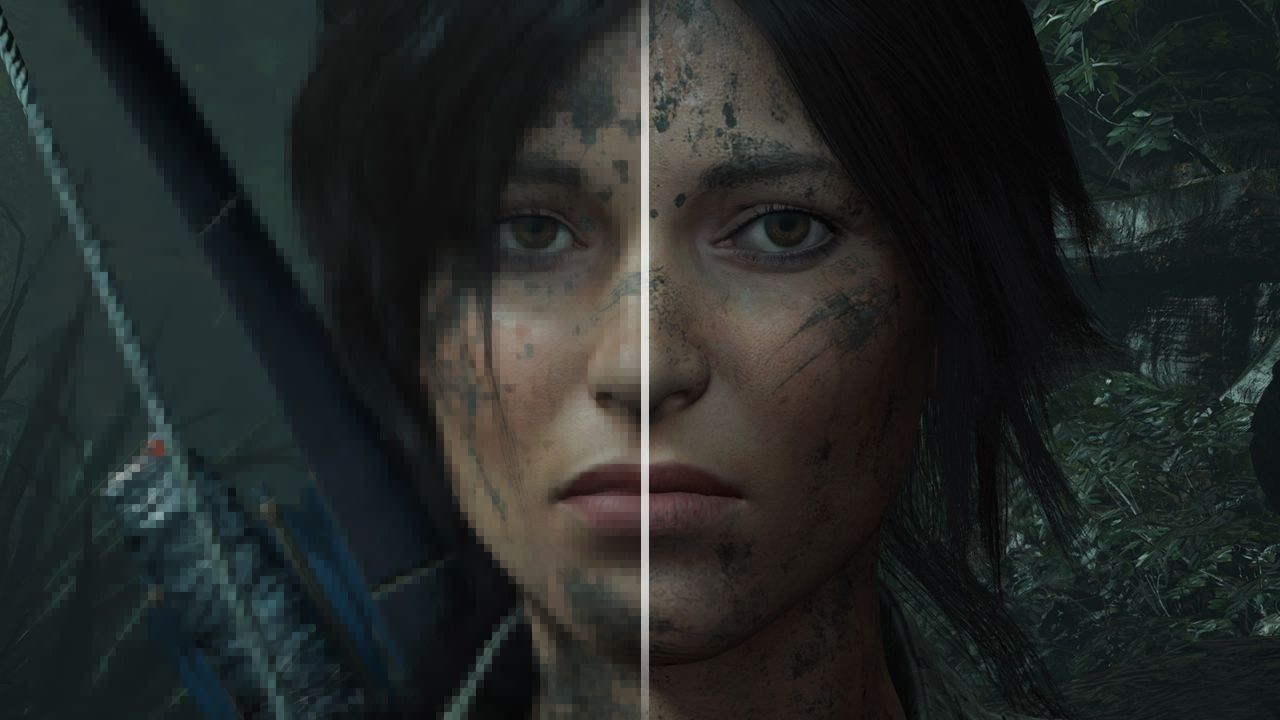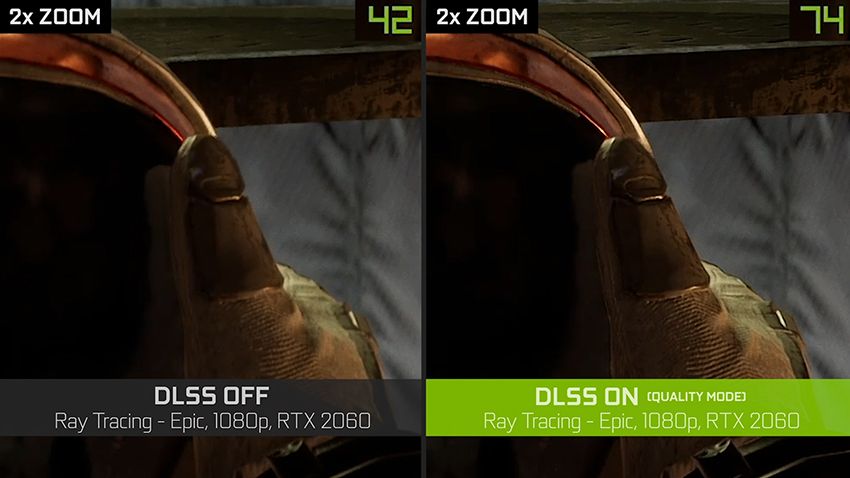DLSS is incredible. When the futurist and inventor Arthur C. Clarke wrote, “Any sufficiently advanced technology is indistinguishable from magic,” he described DLSS 2.0 perfectly. It’s the most exciting advancement we’ve seen in gaming since the invention of cloud gaming, yet most players likely have no idea what it means. Frankly, it’s understandable. Maximizing visual performance is a passion of mine, but even my eyes glaze over at the laundry list of graphics settings in the pause menu of any given game. And while anti-aliasing, ambient occlusion, v-sync, and render scaling are all incredibly important settings that have a huge impact on the image quality of your games, DLSS is on a whole other level. With evidence suggesting that the new Nintendo Switch will come equipped with DLSS technology, it’s worth learning a bit about how it works. The 720p OLED screen doesn’t even begin to tell the whole story of Switch Pro’s resolution — not by a long shot.
Before we get into what DLSS is, we first have to establish what supersampling means. This is a technology that’s been around for quite a while. In essence, it allows your graphics card to render frames at a higher resolution than what your display can support, then downscales the image to fit in your screen. The effect is the removal of aliasing, the common visual flaw in games where lines and edges look jagged and pixelated. If your games have a lot of “jaggies,” typically found in diagonal lines, supersampling can help smooth them out.
The downside of supersampling is that it’s incredibly taxing on your hardware. In order to render frames at a sufficiently high resolution, you can imagine that it would take a tremendous amount of processing power from your GPU. It’s not an efficient solution to aliasing, and when it comes to consoles and handhelds that have limited GPU power, like the Switch, it simply isn’t an option.
Enter DLSS, or deep learning supersampling. Rather than push your graphics card to render higher resolution frames, DLSS uses a neural network to predict what each frame should look like. DLSS is Nvidia’s proprietary technology, and when the technology was first invented, Nvidia essentially trained the neural network by giving it 16K frames from certain games in order to teach it how to generate extra pixels. Once the AI has created a model for what frames in a given game should look like, Nvidia then pushes that model to your GPU through driver updates which are then used as reference when you play the game.
The result is a higher frame rate and more accurate image without the additional power needed to perform traditional supersampling. It is more efficient for your GPU to run the neural network than it is to render each frame in real-time.
That was how DLSS used to work, and despite it being an impressive piece of technology, it didn’t at first make a huge impact on players or the industry. In March of last year, Nvidia revealed DLSS 2.0, a refined process that has a number of significant advantages over the first version of DLSS.
DLSS 2.0 offers image quality at near-native resolution while only rendering less than half of the pixels. The new AI network is significantly more efficient than the previous version, able to work at twice the speed of the original. This means higher frame rates for less processing power.
The biggest advantage of DLSS 2.0 is that the neural network does not require game-specific content to learn. Instead of needing to train the AI for each individual game, Nvidia is now able to provide the network with general content that can be applied to a wide variety of games. Not only does this mean more games will be DLSS compatible, but Nvidia will be able to push driver updates for more games, faster.
DLSS isn’t only used for the purpose of anti-aliasing. The superior rendering speed of the neural network means that DLSS can significantly improve frame rates without compromising on graphics settings to increase them. The total effect won’t necessarily be consistent from game to game, but broadly speaking what we’re talking about is higher frames, less aliasing, better detail on distant and complex objects, and even better details on textures and shadows — all without slowdowns or performance issues. DLSS offers the promise of both performance and quality without sacrifices.
The online debate about the supposed upcoming Switch Pro is whether or not it’s a justifiable upgrade. While it’s said to display at 4K while docked, the seven inch display is still only 720p, just like the original switch. While plenty of people will argue the value of an OLED display for color accuracy and an improved dynamic range, overlooking the benefit of DLSS is a big mistake. The new Switch will benefit tremendously in both docked and handheld from this technology, which is only going to improve as time goes on. While the actual GPU in the Switch itself is still the biggest performance-determining factor, there’s no doubt that DLSS is going to be an absolute game changer for Nintendo’s next handheld console.
Next: Better Performance Is Nice And All, But Will The Nintendo Switch Pro Solve Joy-Con Drift?
- TheGamer Originals
- Nintendo Switch
- Switch
Eric Switzer is the Livestream News Editor for TheGamer as well as the lead for VR and Tech. He has written about comics and film for Bloody Disgusting and VFXwire. He is a graduate of University of Missouri – Columbia and Vancouver Film School. Eric loves board games, fan conventions, new technology, and his sweet sweet kitties Bruce and Babs. Favorite games include Destiny 2, Kingdom Hearts, Super Metroid, and Prey…but mostly Prey. His favorite Pokémon is Umbreon.
Source: Read Full Article


